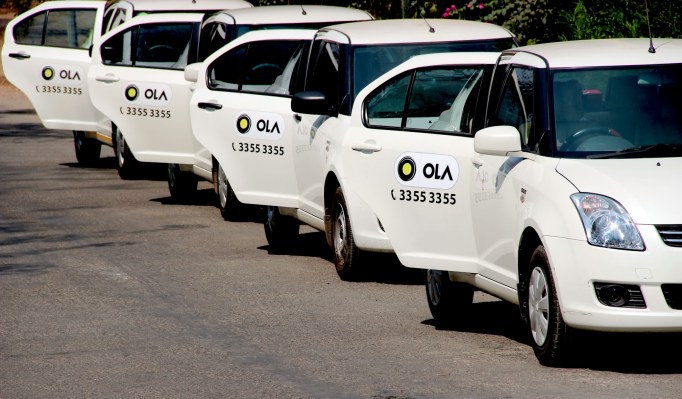New data has suggested that Ola, the $5 billion valued taxi on-demand service, may be more than twice as large as Uber in India.
The information comes courtesy of Truecaller, which today released a snapshot of data from the 130 million registered users of its smart calling app. Truecaller operates a community-based directory that helps label spam callers, but more broadly assign IDs to otherwise random phone numbers that might call you. Truecaller used its database of call tagging to look at the volume of calls coming from numbers that it knows to be Uber and Ola drivers to get a glimpse at the communication volume between drivers and its users, and thus a snapshot into the potential marketshare of the two rivals.
Truecaller found that between January and March this year, 4.1 percent of all calls that it identified as being made for the purpose of getting a taxi where made to Ola or Ola drivers. By contrast, Uber’s share comes in at 1.6 percent. Ola users were found to have racked up 59.5 million outgoing calls and 42.5 million incoming calls over that same period. Uber users call volumes were 24.5 million outgoing and 13.6 million incoming.
[gallery ids="1316879,1316880,1316881"]
Reliable information addressing the marketshare for taxi on-demand companies is hard to come by, and figures released by both Uber and Ola differ wildly, as Mint recently pointed out. That makes this information from Truecaller all the more interesting but, of course, there are caveats — it applies to Truecaller users only (we don’t know how many active users the service has in India), while multiple calls between a driver and passenger are common but can’t be broken out from the Truecaller data. Nonetheless, the information does seem to validate what other such studies have shown. WhichApp, a service that lets friends share their favorite apps with each other, similarly found that Ola usage was double that of Uber, but that sample size was likely far smaller than Truecaller’s given that Which App counts just 90,000 users.
What is perhaps most interesting about this data is the room for expansion that both Ola and Uber have, according to Truecaller’s findings.
The app firm, which is based in Sweden but has a strong focus on emerging markets, found that 94 percent of all calls for taxis or private cars were made independent of Uber, Ola or other booking apps like Meru or Ola-owned TaxiForSure. There may be some error here, but, even adding an unlikely 10 percent error rate, it appears that most users who are savvy enough to download a smart dialer app like Truecaller don’t use taxi on-demand services.
“As you can see, these new app-based services are still just a drop in the bigger ocean that is the Indian taxi industry. Even if the market keeps growing at anywhere near the pace it currently is, then there is abundant room for more than one service to operate,” Truecaller said in a statement.
While Ola got an earlier start on the market by launching its service before Uber arrived in August 2013, Ola’s lead may also be down to the sheer breadth of services that it offers. Last week, the SoftBank-backed company claimed that its ‘Micro’ vehicle service alone is bigger than Uber, covering 75 cities and over a million daily rides. The acquisition of TaxiForSure for $200 million last year will also have helped.
This is the first report of its kind for Truecaller and it is designed to help showcase the company’s monetization push. Truecaller has begun making money via something that it describes as ‘call intent’ — that’s to say that, thanks to its tagging data, it can tell what number or service a phone owner wants when they bring up a number and before they hit dial. That information — which the company stressed is anonymized to protect users — is then offered to companies which can place messages such as promotions or deals.
So, for example, if I am about to call a bank, or receive a call from a bank, there’s intent that companies offering financial products may be interested in pursuing. I might find myself receiving a bank or loan-based message before or after I phone my bank.
